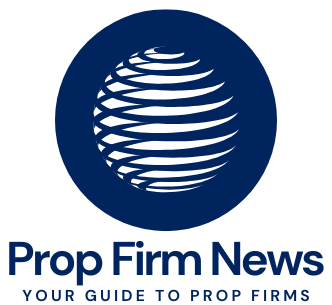Proprietary trading firms have revolutionized the trading industry by providing traders with access to significant capital through various funding models. These models, such as profit splits and funded accounts, define how traders interact with prop firms and share the rewards of their trading success. In this detailed guide, we’ll explore the different funding structures used by prop firms, their benefits, and what traders need to know to choose the right model.
What Are Prop Firm Funding Models?
Prop firm funding models outline how a firm allocates capital to traders and distributes profits. Unlike retail trading, where traders use their own money, prop firms provide the capital, and traders earn a share of the profits based on agreed terms. The most common funding models include funded accounts with profit splits, scaling plans, and instant funding options. Each model comes with unique features, requirements, and risk considerations.
Key Funding Models in Prop Trading
1. Funded Accounts with Profit Splits
The most prevalent model, funded accounts with profit splits, involves traders receiving capital after passing an evaluation or challenge. Once funded, traders keep a percentage of the profits, typically 50% to 90%, depending on the firm. For example:
- FTMO offers an 80/20 profit split (80% to the trader) after passing its two-phase challenge. Learn about FTMO’s model.
- The Funded Trader provides up to 90/10 splits for high-performing traders. Explore their program.
Pros:
- High capital allocation (e.g., $50,000 to $2,000,000).
- Traders bear no personal financial risk for losses.
- Scalable accounts for consistent performers.
Cons:
- Evaluation fees can range from $100 to $1,000.
- Strict rules, such as daily loss limits or maximum drawdowns.
2. Instant Funding Accounts
Some prop firms offer instant funding, where traders receive capital without an evaluation, often in exchange for higher fees or lower profit splits. Firms like My Forex Funds provide instant funding options for traders who want to skip challenges. Check out their instant funding.
Pros:
- Immediate access to capital.
- Ideal for experienced traders confident in their skills.
Cons:
- Lower profit splits (e.g., 50/50).
- Higher upfront costs or subscription fees.
3. Scaling Plans
Many prop firms offer scaling plans, allowing traders to increase their account size based on performance. For instance, a trader starting with a $50,000 account might scale to $200,000 after meeting profit targets. FTMO’s scaling program, for example, increases account sizes by 25% every four months if traders meet specific criteria. Read more about scaling.
Pros:
- Rewards consistent performance with more capital.
- Encourages long-term trading discipline.
Cons:
- Scaling often requires meeting strict profit and risk targets.
- Longer timeframes to achieve higher account sizes.
4. Subscription-Based Models
Some firms operate on a subscription model, where traders pay a recurring fee for access to capital. This is less common but can be seen in firms offering smaller accounts with flexible terms.
Pros:
- Lower entry barriers for beginners.
- Flexible trading rules in some cases.
Cons:
- Ongoing costs can erode profits.
- Limited capital compared to challenge-based models.
Factors to Consider When Choosing a Funding Model
- Evaluation Requirements: Challenge-based models require passing strict tests, which may not suit beginners. Instant funding might be better for experienced traders.
- Profit Split: Higher splits (e.g., 80/20 or 90/10) are more attractive but often come with tougher rules.
- Risk Rules: Understand the firm’s drawdown limits and trading restrictions to ensure they align with your strategy.
- Costs: Evaluate challenge fees, subscription costs, or profit-sharing terms to determine cost-effectiveness.
- Scalability: If long-term growth is your goal, prioritize firms with robust scaling plans.
For a deeper dive into choosing a prop firm, check out Benzinga’s guide to prop trading.
Popular Prop Firms and Their Funding Models
- FTMO: Two-phase challenge with 80/20 profit split and scaling plans. Visit FTMO.
- My Forex Funds: Offers instant funding, evaluation accounts, and rapid scaling. Learn more.
- The Funded Trader: Flexible challenges with up to 90/10 splits. Explore here.
- SurgeTrader: One-step evaluation with high profit splits. Check it out.
Conclusion
Prop firm funding models provide traders with diverse opportunities to access capital and grow their trading careers. Whether you prefer the structured path of a funded account with a profit split, the immediacy of instant funding, or the potential of scaling plans, there’s a model to suit your needs. However, success requires understanding the terms, costs, and risks involved. Research reputable firms, align their models with your trading style, and take the first step toward trading with professional capital!
